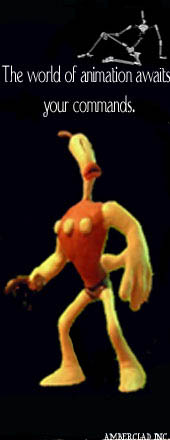
Over the years, many ways have been developed to make a stop-motion puppet talk. One of the earlier and more difficult methods is one in which the animator re-sculpts his puppet's mouth to the desired shape while in the middle of the animating process. Doing so doubles or triples the time the animator spends on a scene. This technique can look great if you're good at re-sculpting, but it isn't a good idea to have your focus on sculpting when it should be on animating.
Probably the easiest technique is one in which the animator creates a puppet whose mouth can be opened and closed and then animates his speech by just propping the mouth open and then closing it, without worrying about the lips, teeth, or tongue. This technique is easy to accomplish, but it usually makes the puppet look like a weird robot from a B horror movie. Unless that's what you're going for I would strongly recommend avoiding this technique.
The best technique I have seen uses the the replacement mouth method which has been adopted by almost all of the larger stop-motion studios. In the replacement mouth method, the sculptor cuts out the puppet's mouth and sculpts replacement mouths that fit where he cut out the original mouth. After he's finished sculpting all his mouths, he gives them to the animator, who then inserts the correct mouth shape in each frame in order to shape the words his puppet is saying. This way, the animator and the sculptor have plenty of time to add as much detail as they want. When I first heard of this method I thought it would take a tremendous amount of time sculpting 26 different mouths. But I was soon enlightened to the fact that the mouth only needs to make 8 basic shapes to speak fluently. Check out this paper, which shows which mouth shapes sound the same and how to sculpt them.
A technique similar to replacement mouths is drawing the mouth shapes on a piece of paper and adhering it to the puppet's mouth area. Surprisingly, this method tends to be quite cartoonish and funny looking.
One of the hardest things in the process of making puppet's talk is getting the recorded voice to match up with the lip movements. In Part Two of this post, we will look into some of the ways to archive lip syncing.







